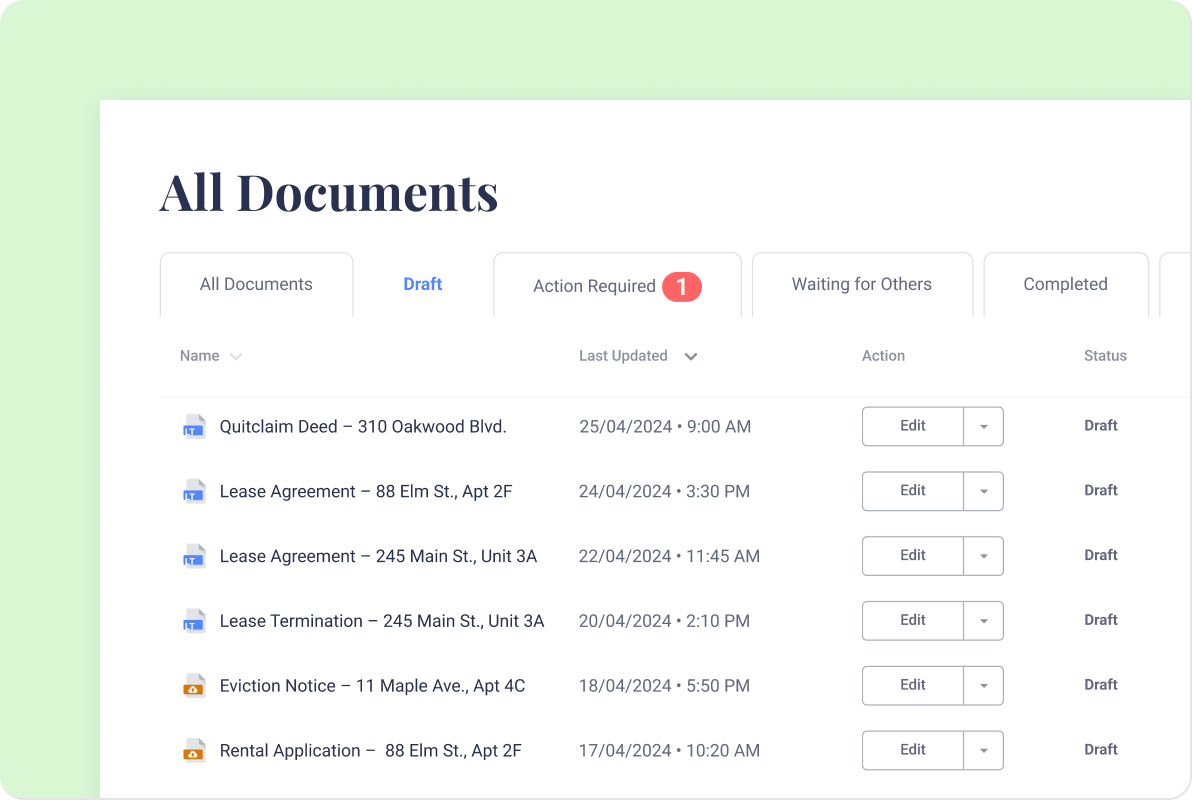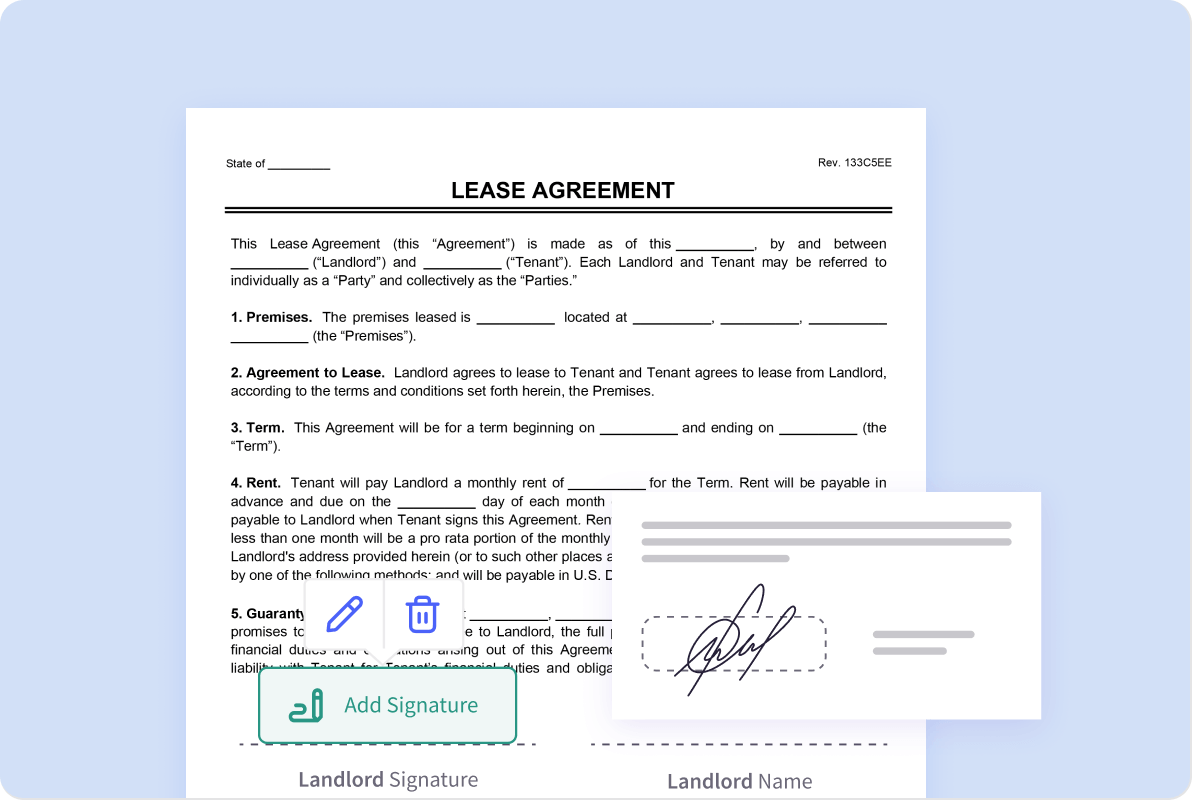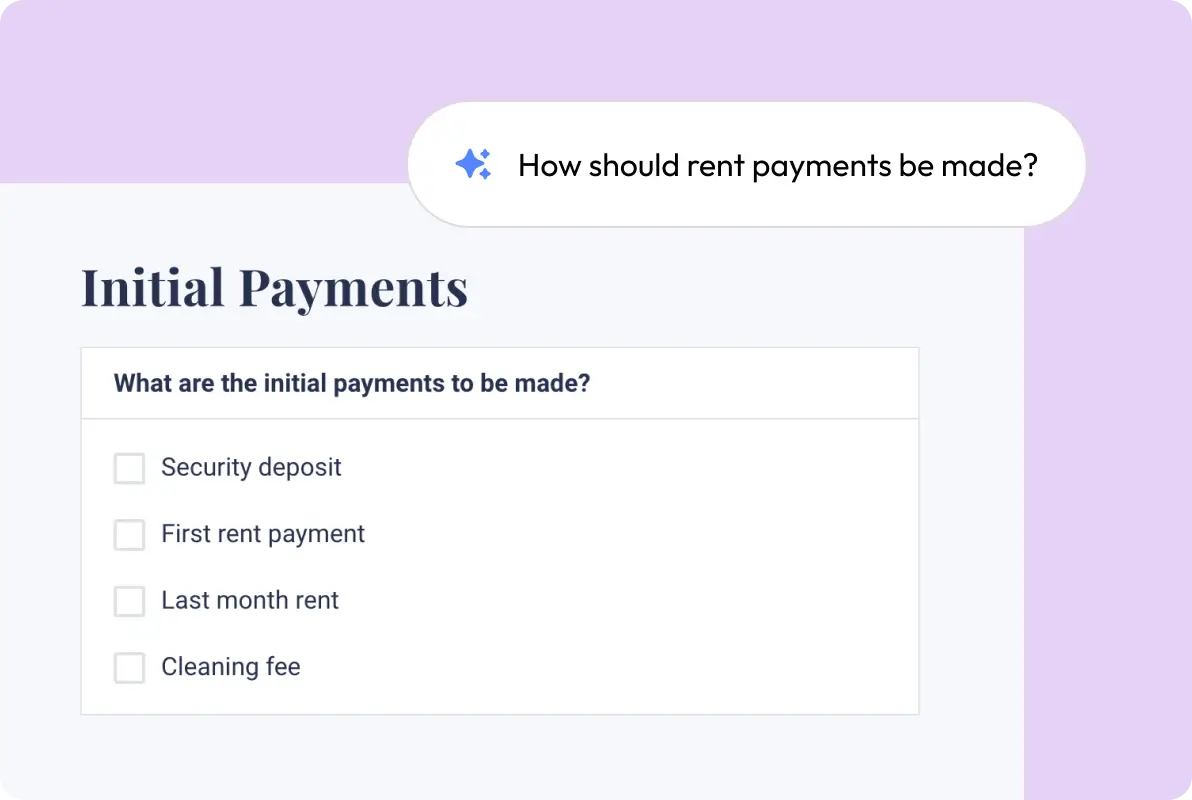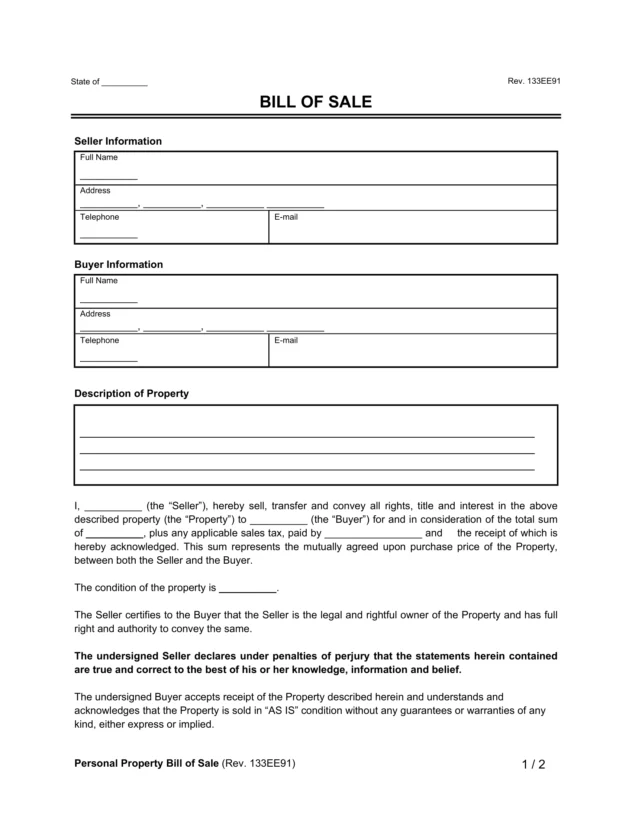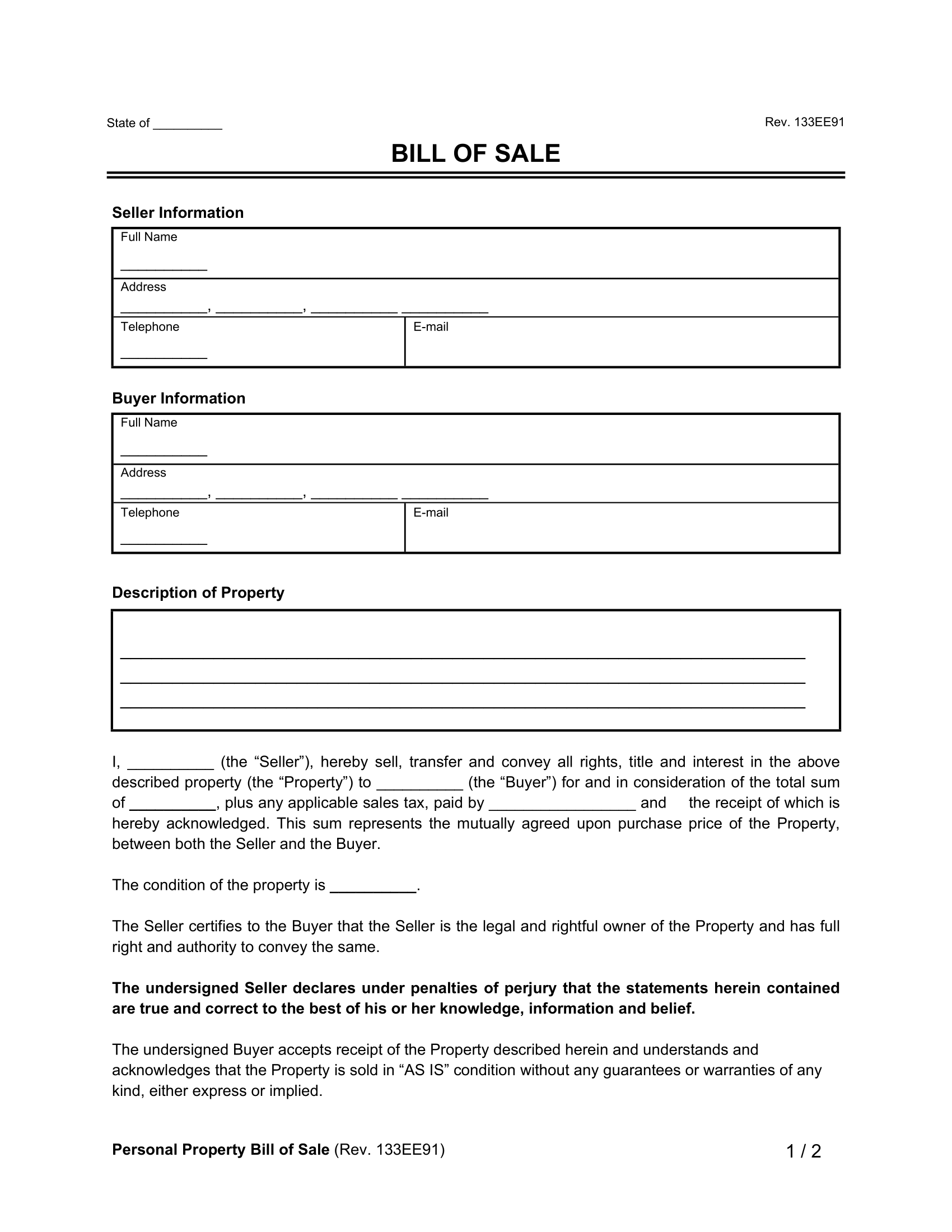What Is a Bill of Sale?
A bill of sale lets you show that an item sale occurred. It proves the item’s ownership was transferred from the seller to the buyer. You can use this document to record and refer to the transaction’s date, the item’s sale price, and the item’s description.
You might need these details to prove you own the item, register it, resolve disputes, or handle tax filing. Plus, some states actually require a bill of sale for certain transactions, so it’s a good way to ensure you’re following the rules.
Whether you’re buying a used car or looking to sell some old furniture, a bill of sale is helpful in authenticating the transaction.
Is a Bill of Sale Legally Binding?
A bill of sale can be legally binding, but its enforceability depends on several factors. For example, the seller and the buyer must sign the document willingly. They must also be able to show consideration (i.e., money for goods) and record the transaction’s details.
Other requirements for a bill of sale to be legally binding include the following:
- explicit outline of additional terms and warranties
- involvement of a lawful transaction
- no misrepresentation of the for-sale items
Our bill of sale templates provide plenty of space to record all the important transaction details, including the item’s description, sale price, and terms of sale, ensuring the document meets the necessary legal requirements.
How to Write a Bill of Sale
Writing a bill of sale can be seamless if you have the right details. Follow these steps to create a solid document that protects all parties involved.
1. List the Date & Party Details
Write the current date at the top of the document. This detail establishes when the sale took place, which is important for creating a clear timeline for legal and tax reasons.
Example
Let’s say you’re selling a used car on January 19, 2025. The date helps clarify that the sale occurred on this day, which is key if any questions arise later about the car’s condition or ownership.
On your bill of sale form, you can also include the full names and addresses of both parties. These details identify who is involved in the transaction and which parties are giving up and receiving ownership.
Example
Seller:
Bradley Carrington
4725 Silverstone Dr., Baton Rouge, LA 70808
(225) 555-7234
[email protected]
Buyer:
Maya Donovan
8423 Cedar Hollow Rd., Baton Rouge, LA 70808
(225) 555-3118
[email protected]
These are examples of notating the seller and buyer in a transaction. It clearly identifies them and gives the counterparty the option to reach out with the provided contact information.
If the buyer or seller is a business, include the business name and address as well.
2. Provide a Detailed Item Description
Include key details to identify the item being sold. If you’re selling a car, you can provide the make, model, year, odometer reading, Vehicle Identification Number (VIN), color, and condition. If you’re selling a camera, the details you need to provide will differ, as they will include make, model, serial number, accessories included, and software or digital licenses.
Example
Item Description:
- Make: Honda
- Model: Civic
- Year: 2015
- VIN (Vehicle Identification Number): 2HGFC2F50FH123456
- Odometer Reading: 75,000 miles
- Condition: Used, in good condition.
- The car has been regularly maintained and is mechanically sound.
- The exterior has a few minor scratches and small dings from normal use.
- The interior is clean with no significant damage, but it shows signs of wear on the driver’s seat.
- Color: Silver
- Engine Type: 1.8L 4-cylinder
- Transmission: Automatic
- Fuel Type: Gasoline
- Registration: Valid through June 2024
- Title Status: Clean title, no liens
This item description covers key details about the car and sets expectations for the buyer regarding the car’s condition.
Always be honest about the item’s condition so the buyer knows exactly what item they’re getting and what state it will come in.
3. State the Selling Price
Clearly list the agreed-upon selling price for the item, including any taxes or additional fees. Specify if you’re offering a discount or if the item includes any additional services, like free shipping or delivery.
Example
$5,500 for the 2015 Honda Civic, including sales tax. The customer must pick up the vehicle; no delivery fee is included.
This type of clear price promotes transparency and helps minimize confusion.
Be sure to negotiate before creating the bill of sale, as any price you list in your bill of sale should be final.
4. Outline the Payment Terms
Specify the payment method the buyer will use. Clarify if the payment will occur in one amount or installment payments.
Example
The buyer will pay the full purchase price in cash when the seller delivers the vehicle to the buyer.
This clarification ensures that both parties are on the same page regarding how the transaction will occur. For high-value items, you may consider more secure methods than cash, like a cashier’s check or bank transfer.
If the transaction will occur between friends or family members and payment will be made in installments, consider using a promissory note template to formalize the payment terms.
5. Add Warranties (Optional)
Add warranties if you want the purchase to have any promises or guarantees. Ensure that you only list realistic promises.
Example
The seller guarantees that the vehicle is free from any liens and will pass emissions testing.
These warranties give confidence to the buyer and ensure that the sale will only happen if these conditions are met.
6. Add Signatures
Both the buyer and seller need to sign the bill of sale form to make it official. If either party omits their signature, the bill of sale won’t be valid, and your transaction could be questioned later.
Example
After agreeing to sell a car, you and the buyer sign the bill of sale. You may also want a witness or notary to sign, especially for high-value items.
If the item is a large asset, getting it notarized can add an extra layer of verification that the agreement is legitimate.
7. Make Copies
Once both parties sign, create at least two copies: one for the buyer and one for the seller.
Example
After selling a used car to a neighbor, the seller can give them a copy of the bill of sale and keep the original for themselves.
When they each have a written record, both parties can refer to the document later if disputes arise.
Key Terms
Whether you’re buying or selling an item, knowing the following legal terms is essential to correctly completing your Bill of Sale form.
- Buyer — The person purchasing the item, also known as the purchaser.
- Seller — The person (or party) that is selling the item.
- As-is — “As-is” means that the item is sold in its current condition at the time of sale and that the buyer accepts any present faults.
- Warranty Provision — A written guarantee that the seller will repair or replace the item if there are any defects over a specified period. If you don’t include a warranty provision in your Bill of Sale, the item is sold “as-is.”
- Certificate of Title — Separate paperwork that states an item’s legal owner. If applicable, this should be transferred when completing the sale. Note that a Bill of Sale proves the transaction took place, but it’s not always proof of ownership.
- Sales Tax — A tax the government imposes on the sale of goods. This tax varies by state, and a Bill of Sale helps determine how much you need to pay.
- Notarization — A process that authenticates a legal document and the parties’ signatures. Not all states require a Bill of Sale to be notarized.
- Notary Public — A state-appointed representative who notarizes documents.
- Promissory Note — A promissory note is a document that promises someone will pay an amount of money. You should include one with your Bill of Sale if the transfer requires the buyer to take out a loan instead of paying in full.
- Odometer Reading — A section of a Vehicle Bill of Sale where you record the vehicle’s mileage at the time of sale.
- Vehicle Identification Number (VIN) — A unique identification code for a motor vehicle must be included in a Vehicle Bill of Sale.
